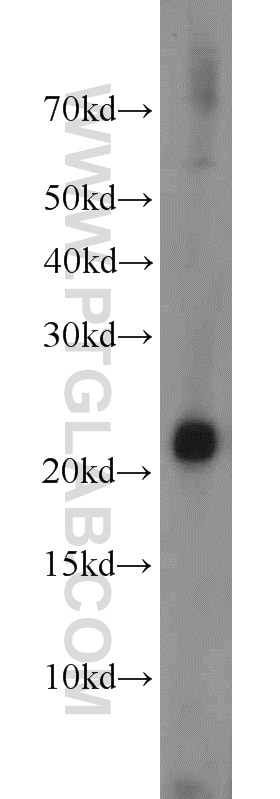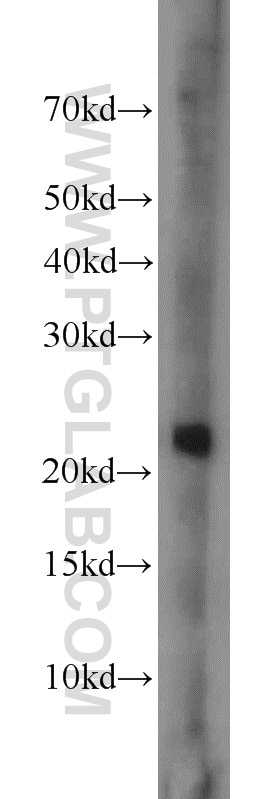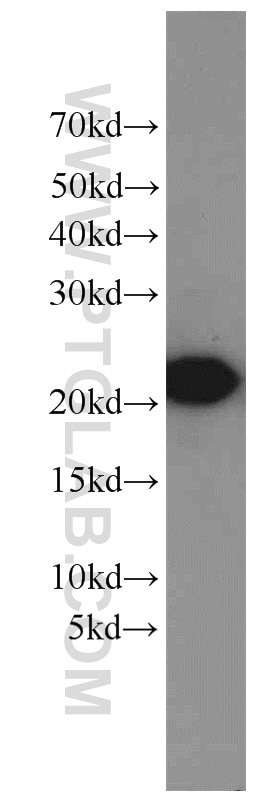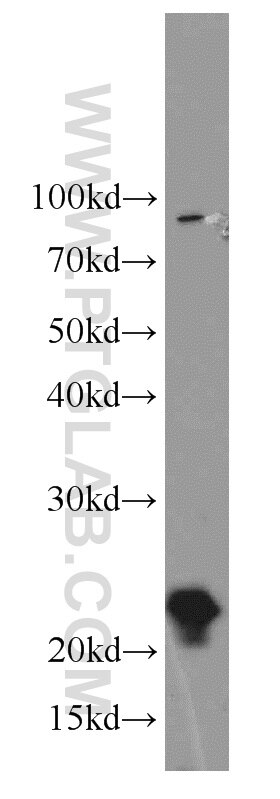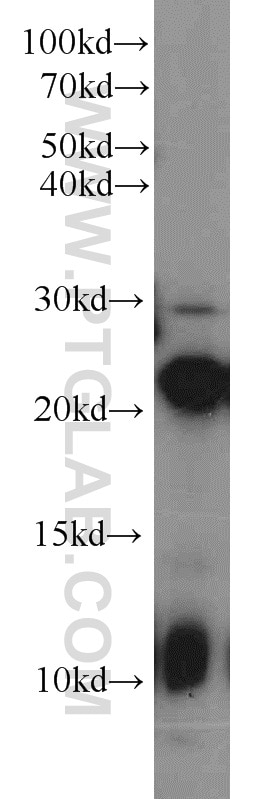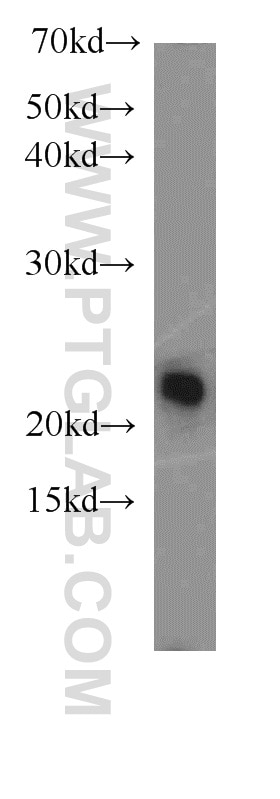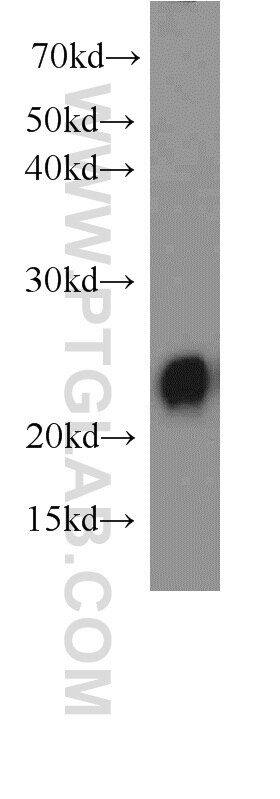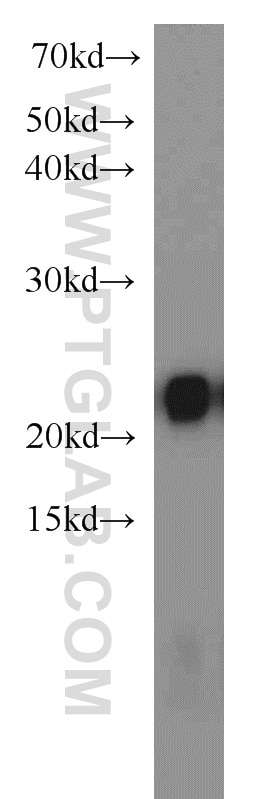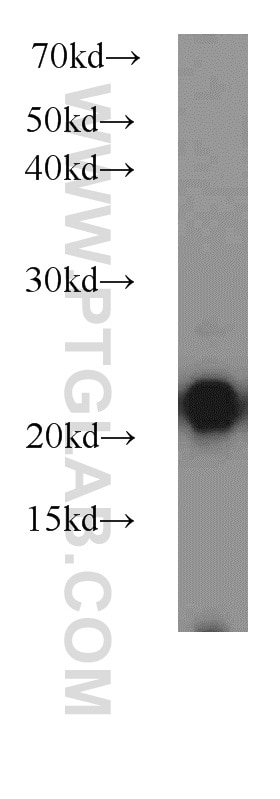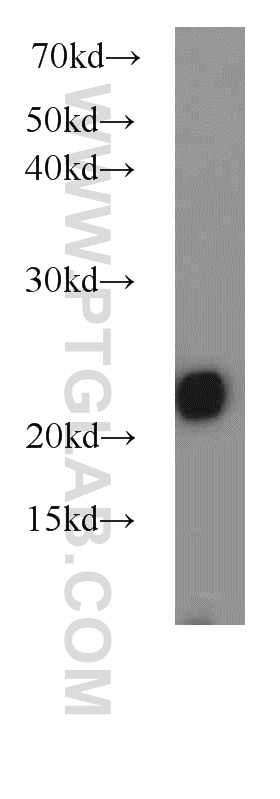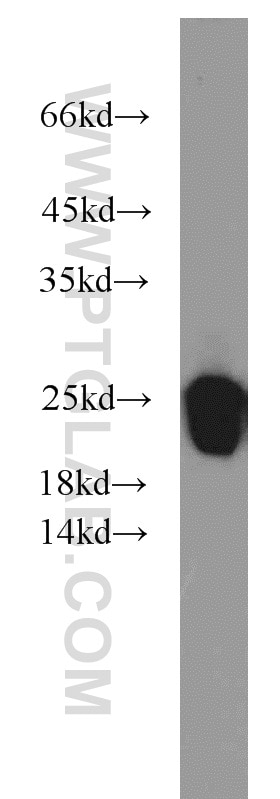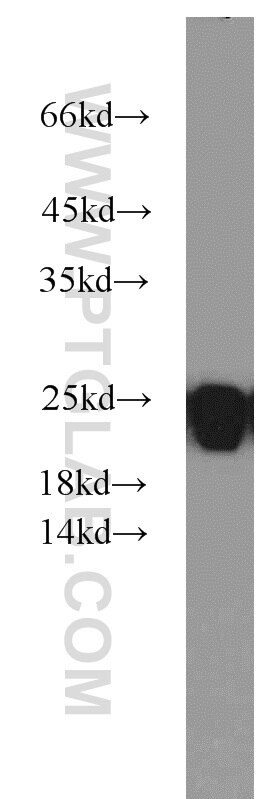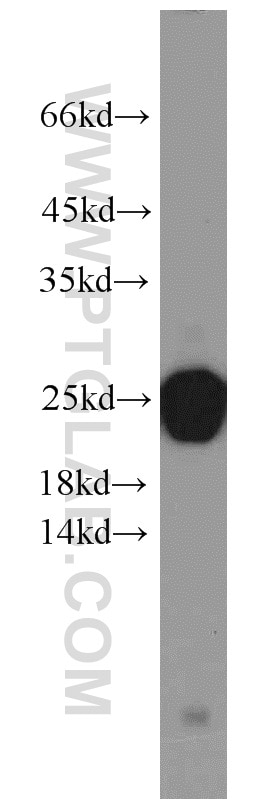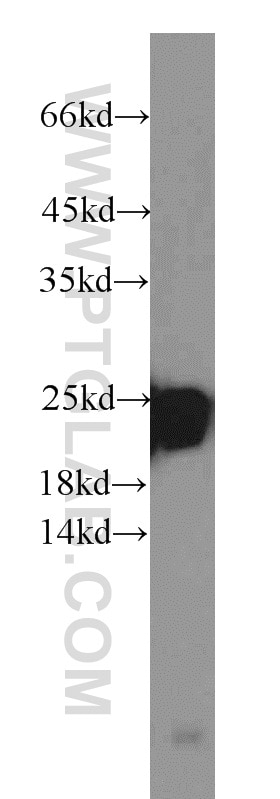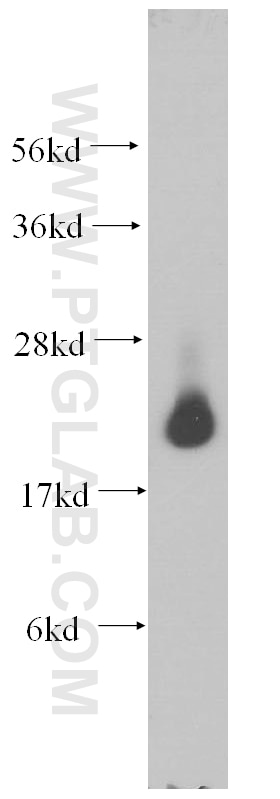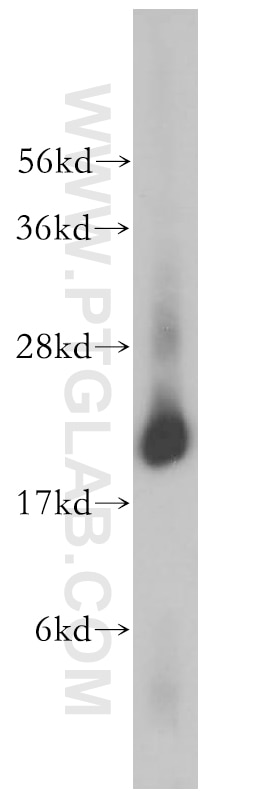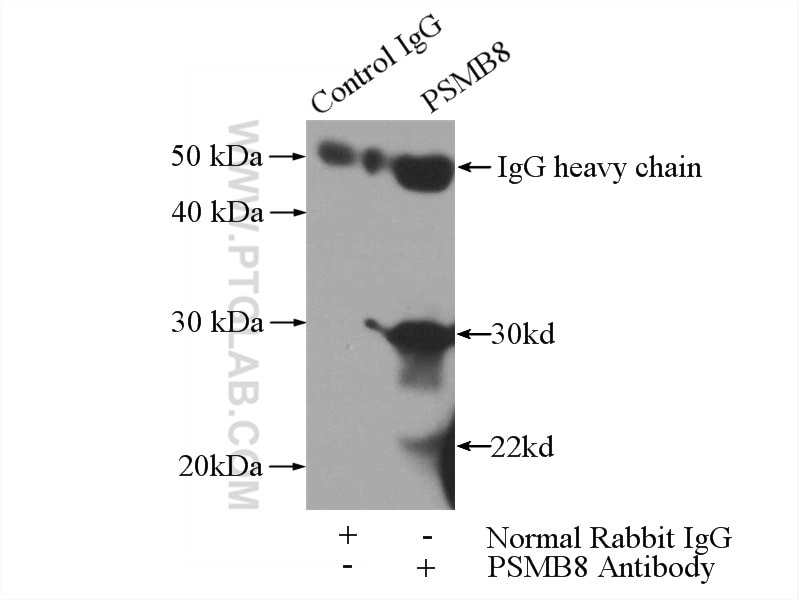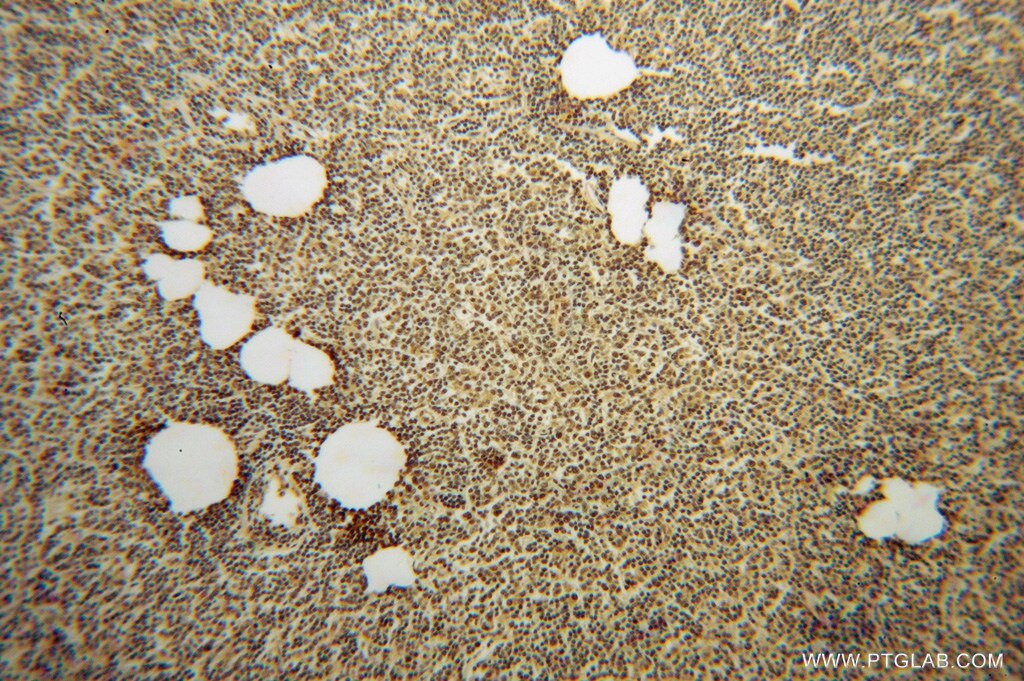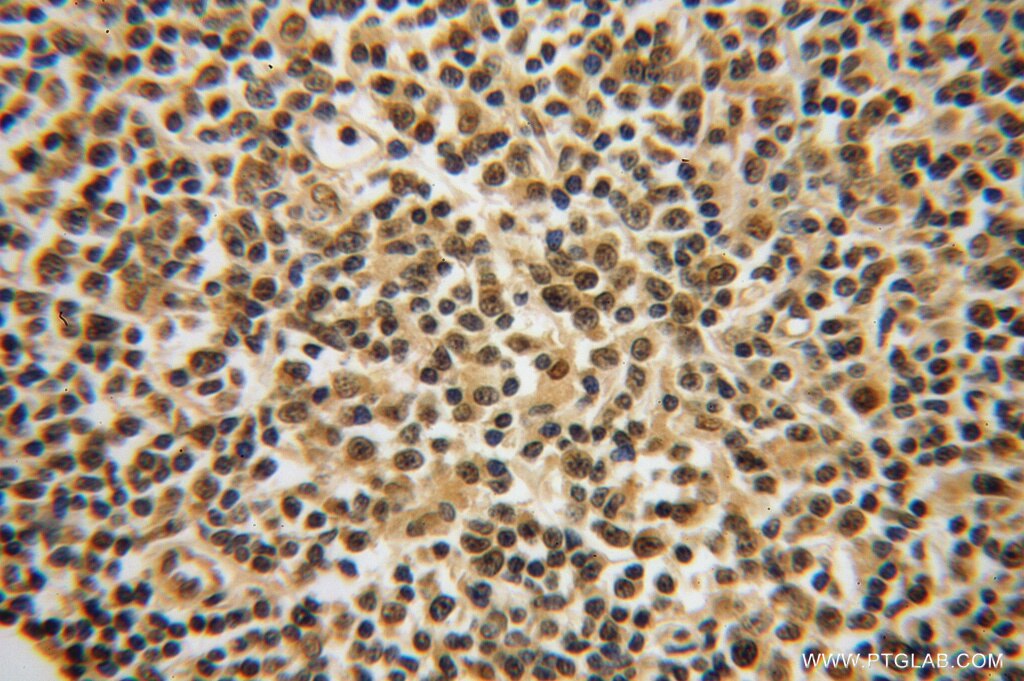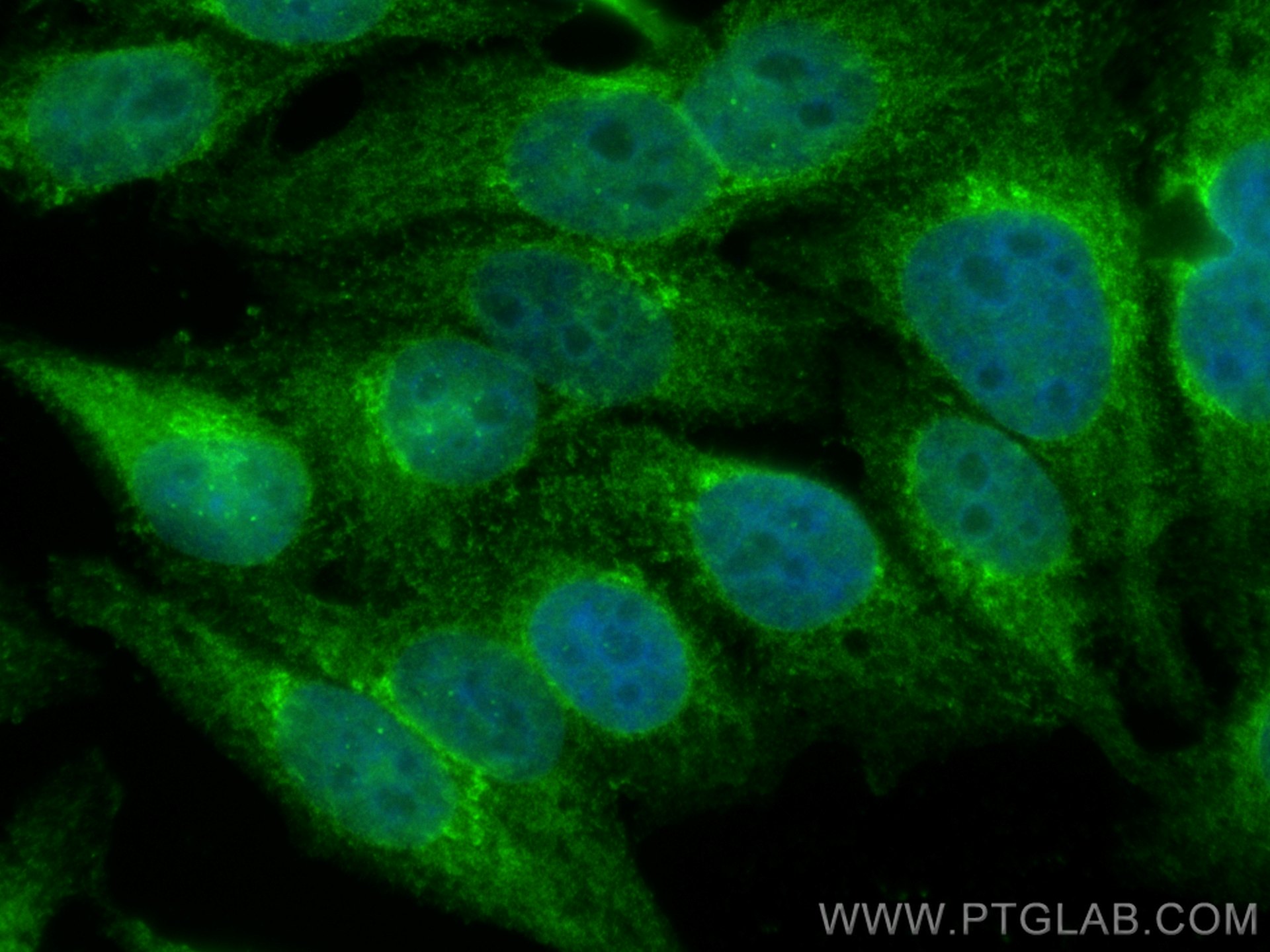- Phare
- Validé par KD/KO
Anticorps Polyclonal de lapin anti-PSMB8
PSMB8 Polyclonal Antibody for WB, IP, IF, IHC, ELISA
Hôte / Isotype
Lapin / IgG
Réactivité testée
Humain, souris
Applications
WB, IHC, IP, ELISA
Conjugaison
Non conjugué
N° de cat : 14859-1-AP
Synonymes
Galerie de données de validation
Applications testées
| Résultats positifs en WB | tissu rénal de souris, cellules Jurkat, cellules Raji, tissu rénal humain |
| Résultats positifs en IP | cellules Raji |
| Résultats positifs en IHC | tissu de lymphome humain il est suggéré de démasquer l'antigène avec un tampon de TE buffer pH 9.0; (*) À défaut, 'le démasquage de l'antigène peut être 'effectué avec un tampon citrate pH 6,0. |
Dilution recommandée
| Application | Dilution |
|---|---|
| Western Blot (WB) | WB : 1:500-1:2000 |
| Immunoprécipitation (IP) | IP : 0.5-4.0 ug for 1.0-3.0 mg of total protein lysate |
| Immunohistochimie (IHC) | IHC : 1:20-1:200 |
| It is recommended that this reagent should be titrated in each testing system to obtain optimal results. | |
| Sample-dependent, check data in validation data gallery | |
Applications publiées
| KD/KO | See 1 publications below |
| WB | See 6 publications below |
| IHC | See 2 publications below |
Informations sur le produit
14859-1-AP cible PSMB8 dans les applications de WB, IHC, IP, ELISA et montre une réactivité avec des échantillons Humain, souris
| Réactivité | Humain, souris |
| Réactivité citée | Humain, souris |
| Hôte / Isotype | Lapin / IgG |
| Clonalité | Polyclonal |
| Type | Anticorps |
| Immunogène | PSMB8 Protéine recombinante Ag6660 |
| Nom complet | proteasome (prosome, macropain) subunit, beta type, 8 (large multifunctional peptidase 7) |
| Masse moléculaire calculée | 30 kDa |
| Poids moléculaire observé | 23 kDa |
| Numéro d’acquisition GenBank | BC001114 |
| Symbole du gène | PSMB8 |
| Identification du gène (NCBI) | 5696 |
| Conjugaison | Non conjugué |
| Forme | Liquide |
| Méthode de purification | Purification par affinité contre l'antigène |
| Tampon de stockage | PBS avec azoture de sodium à 0,02 % et glycérol à 50 % pH 7,3 |
| Conditions de stockage | Stocker à -20°C. Stable pendant un an après l'expédition. L'aliquotage n'est pas nécessaire pour le stockage à -20oC Les 20ul contiennent 0,1% de BSA. |
Informations générales
PSMB8(Proteasome subunit beta type-8) is also named as LMP7, PSMB5i, RING10, Y2 and belongs to the peptidase T1B family. The gene encodes the chymotrypsin-like catalytic subunit of the immunoproteasome(PMID: 19525961). PSMB8 has a role in controlling pathogenic immune responses and may be a target in autoimmune disorders. Its prosequence is not essential for incorporation of PSMB8 into the maturing proteasome, but it increased the efficiency of PSMB8 incorporation and proteasome maturation(PMID: 10926487). The pro-PSMB8 is a 276aa protein with the molecular mass of 30 kDa, and the mature form is about 23kDa due to the 72aa propeptide cleaved. Defects in PSMB8 are the cause of Nakajo syndrome (NKJO).
Protocole
| Product Specific Protocols | |
|---|---|
| WB protocol for PSMB8 antibody 14859-1-AP | Download protocol |
| IHC protocol for PSMB8 antibody 14859-1-AP | Download protocol |
| IP protocol for PSMB8 antibody 14859-1-AP | Download protocol |
| FC protocol for PSMB8 antibody 14859-1-AP | Download protocol |
| Standard Protocols | |
|---|---|
| Click here to view our Standard Protocols |
Publications
| Species | Application | Title |
|---|---|---|
J Cell Mol Med miR-451a inhibits cancer growth, epithelial-mesenchymal transition and induces apoptosis in papillary thyroid cancer by targeting PSMB8. | ||
JCI Insight Blockade of the CXCR3/CXCL10 axis ameliorates inflammation caused by immunoproteasome dysfunction. | ||
Sci Rep Airway epithelial immunoproteasome subunit LMP7 protects against rhinovirus infection
| ||
Int Immunopharmacol Targeted inhibition of the immunoproteasome blocks endothelial MHC class II antigen presentation to CD4+ T cells in chronic liver injury | ||
J Neuroinflammation β-arrestin1 regulates astrocytic reactivity via Drp1-dependent mitochondrial fission: implications in postoperative delirium |
